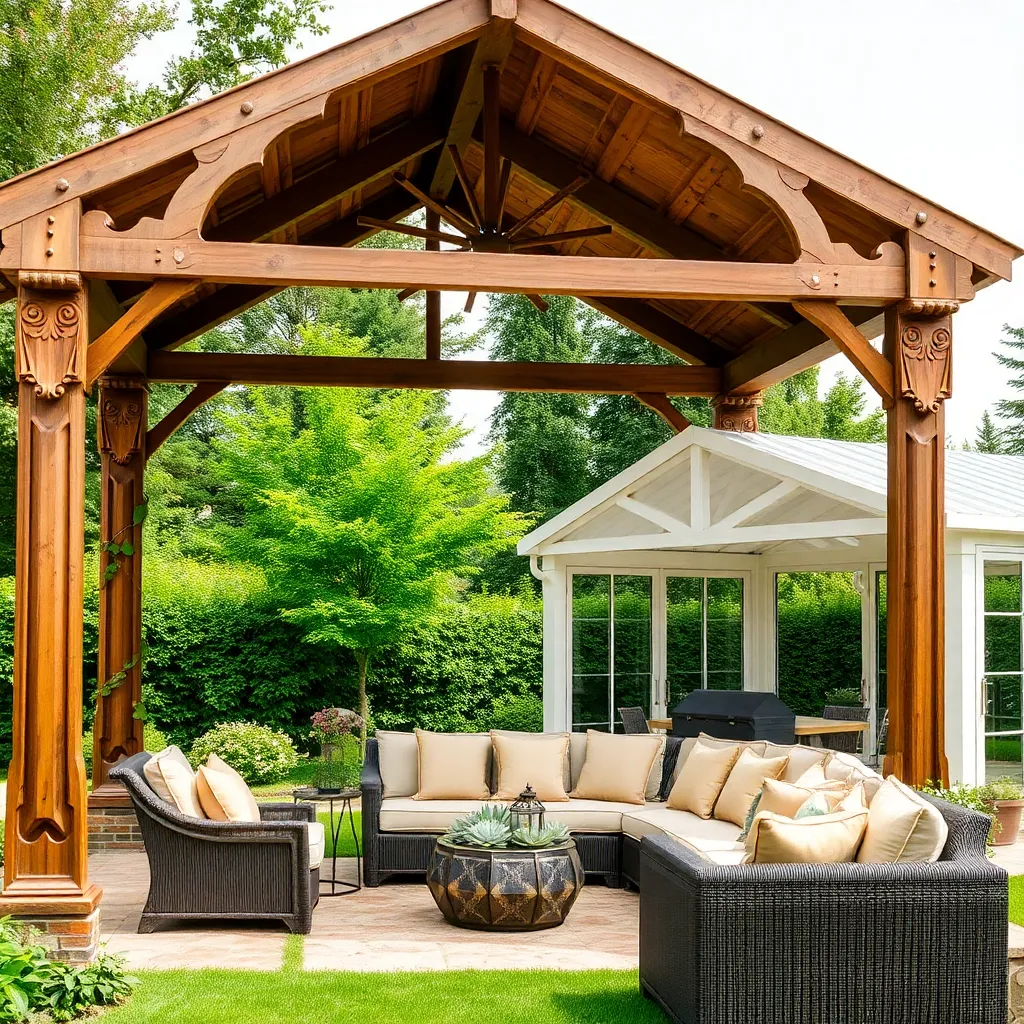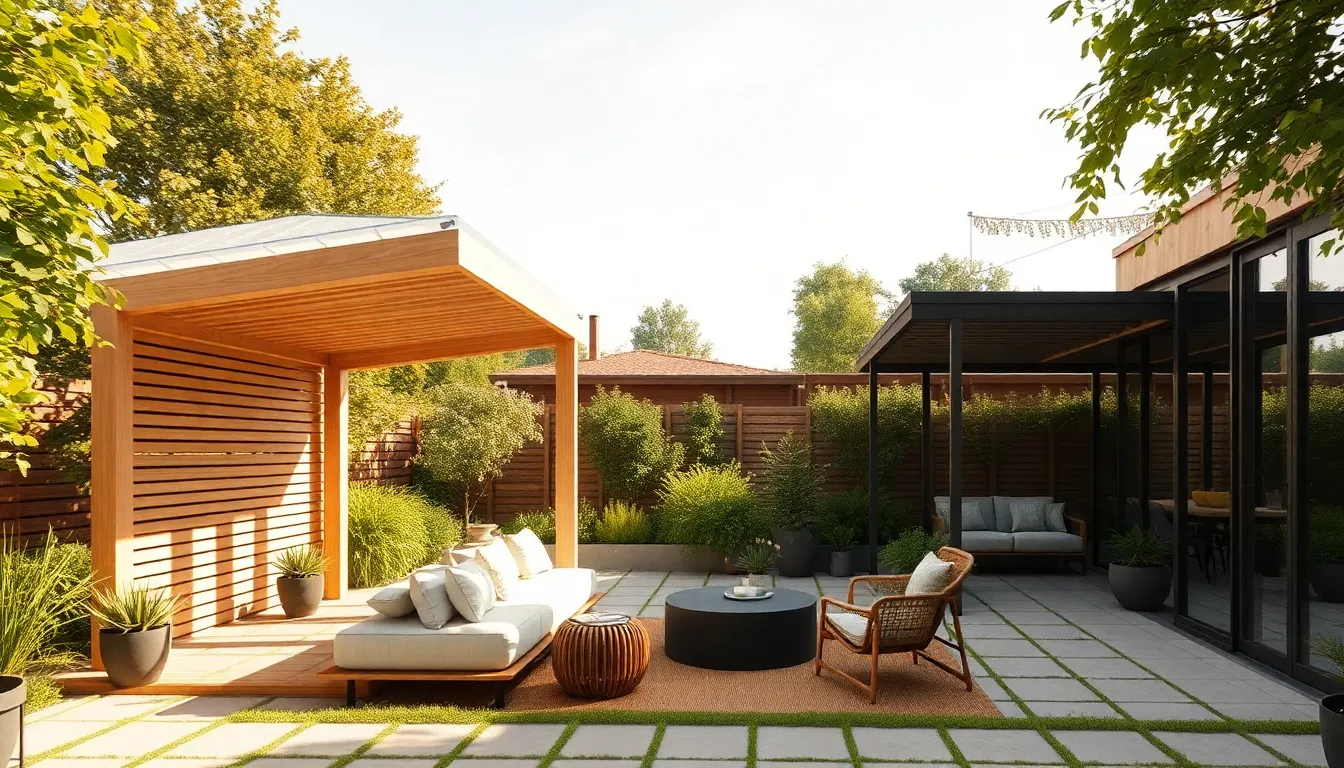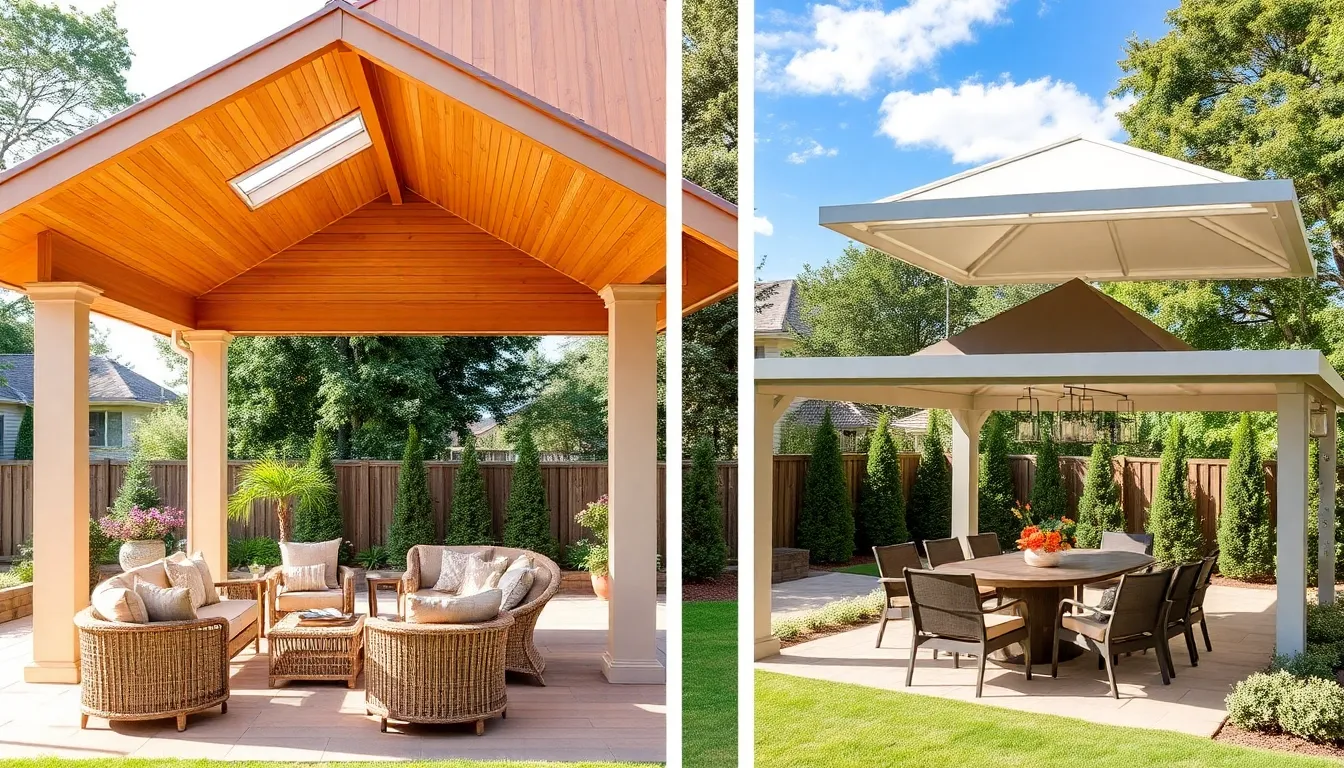Imagine stepping into your backyard and being greeted by the perfect blend of structure and nature—a pavilion that doesn’t just stand alone but is harmoniously integrated into a lush landscape. Whether you’re just beginning to explore outdoor transformations or you’ve been cultivating your space for years, the right pavilion landscaping combo can elevate your outdoor experience and create a sanctuary right outside your door.
In this article, we’ll uncover 11 inspiring pavilion landscaping combinations that blend functionality with beauty. You’ll discover practical tips and creative ideas to design a space that suits your style, from choosing complementary plantings to incorporating natural elements that enhance your pavilion’s charm. Let’s explore these possibilities together, transforming your outdoor area into a vibrant extension of your home.
Choosing the Right Pavilion Design
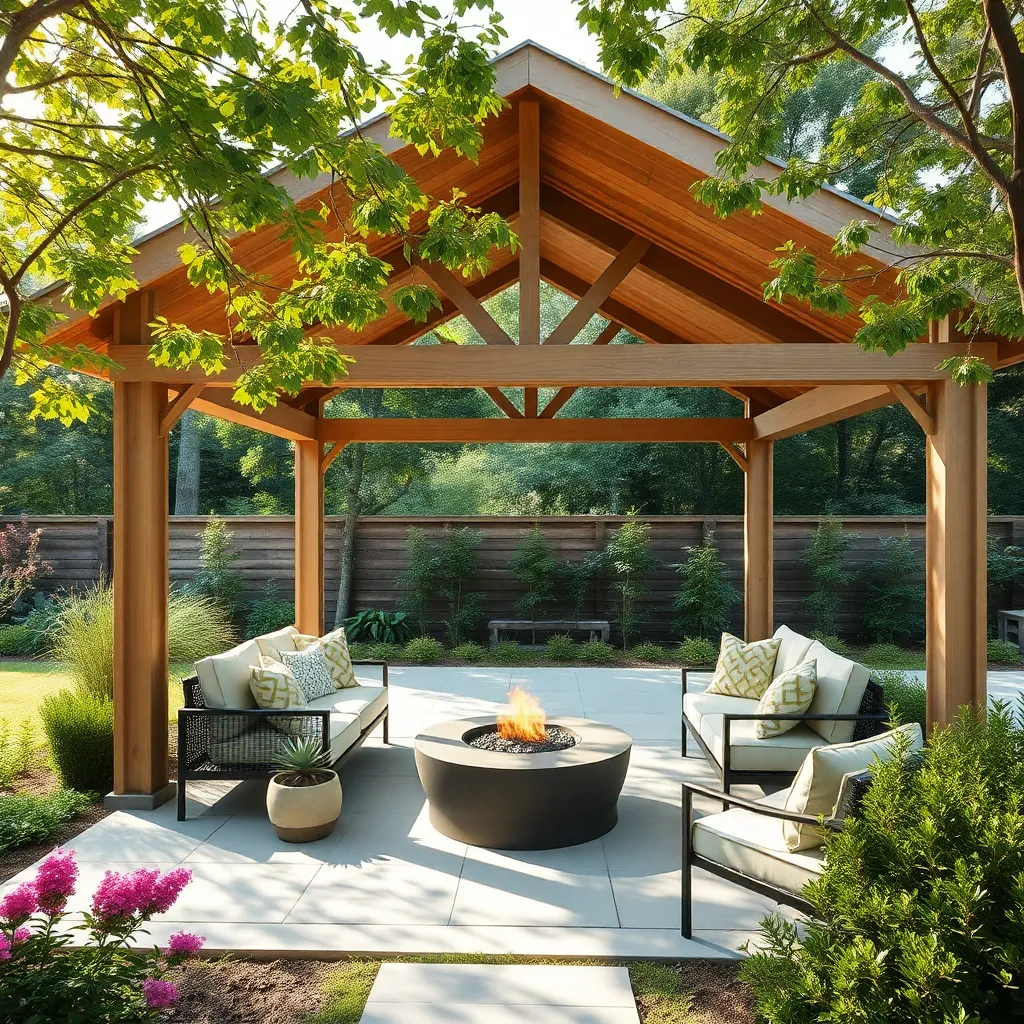
When choosing the right pavilion design for your outdoor space, consider the **materials** that best suit your climate and aesthetic. For a classic look, opt for **wooden pavilions** using treated pine or cedar, known for their durability and natural beauty. If maintenance is a concern, **aluminum or vinyl** options offer a sleek, modern style with minimal upkeep. Ensure your pavilion is at least **10×10 feet** to comfortably accommodate seating and walkways.
Incorporate **design elements** that enhance both functionality and appearance. Include features like **built-in benches** or **integrated lighting** to extend the use of your pavilion into the evening. For advanced customization, consider adding **sliding glass panels** or **retractable awnings** for versatile weather protection. Regardless of your design choice, ensure that the pavilion complements your existing landscape, creating a harmonious and inviting outdoor retreat.
Integrating Pavilions with Garden Paths
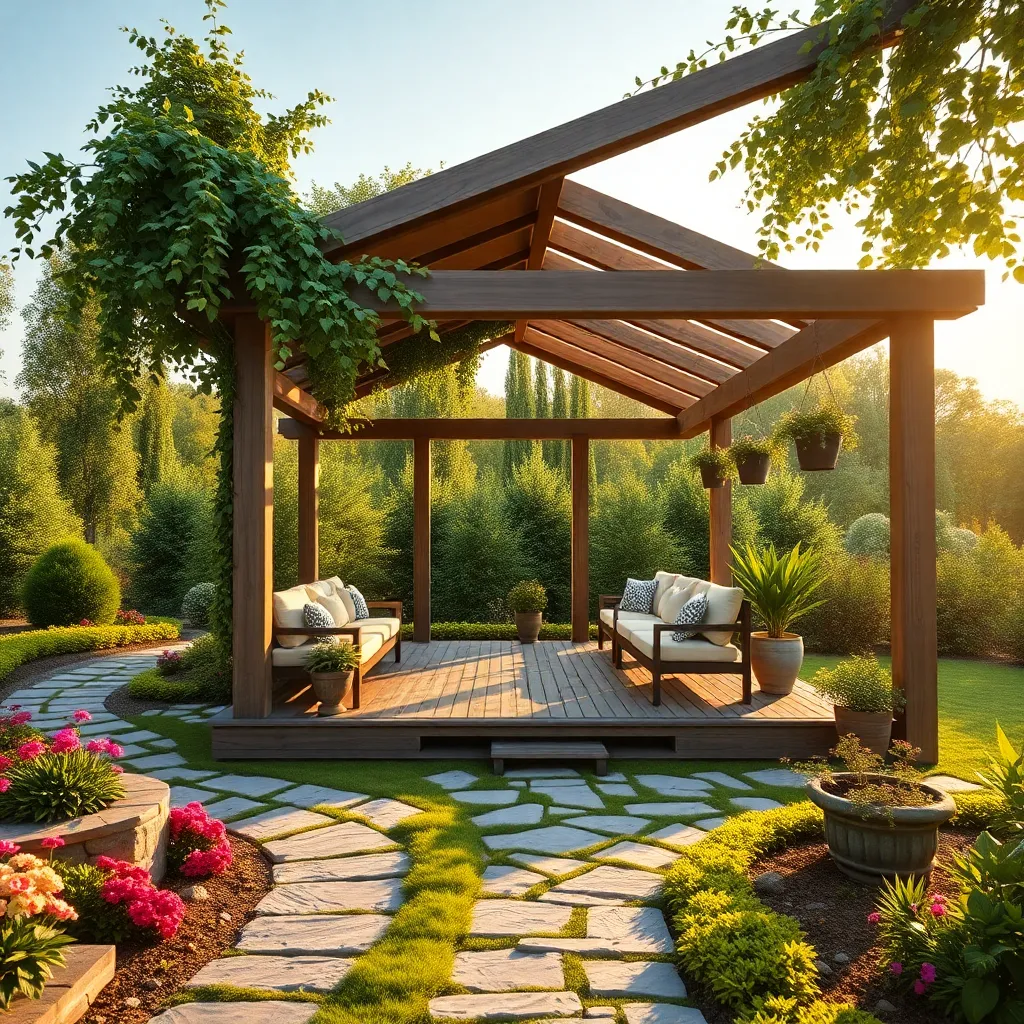
To seamlessly integrate a pavilion with your garden paths, begin by ensuring that the paths naturally lead to the pavilion, creating a harmonious flow. Choose materials like stone or brick for the paths to match the pavilion’s structure, enhancing the overall aesthetic. Consider the pavilion’s placement in relation to your garden’s focal points, ensuring that it offers a strategic view and complements the garden’s layout.
Incorporating elements like curved paths can soften the transition from the garden to the pavilion, making the space inviting. For an advanced touch, install lighting along the paths to highlight the route and create a cozy atmosphere during evening gatherings.
- Use low-voltage LED lights for energy efficiency.
- Consider solar-powered options for eco-friendliness.
These elements not only enhance safety but also add a magical touch to your landscape design.
Enhancing Privacy with Green Screens
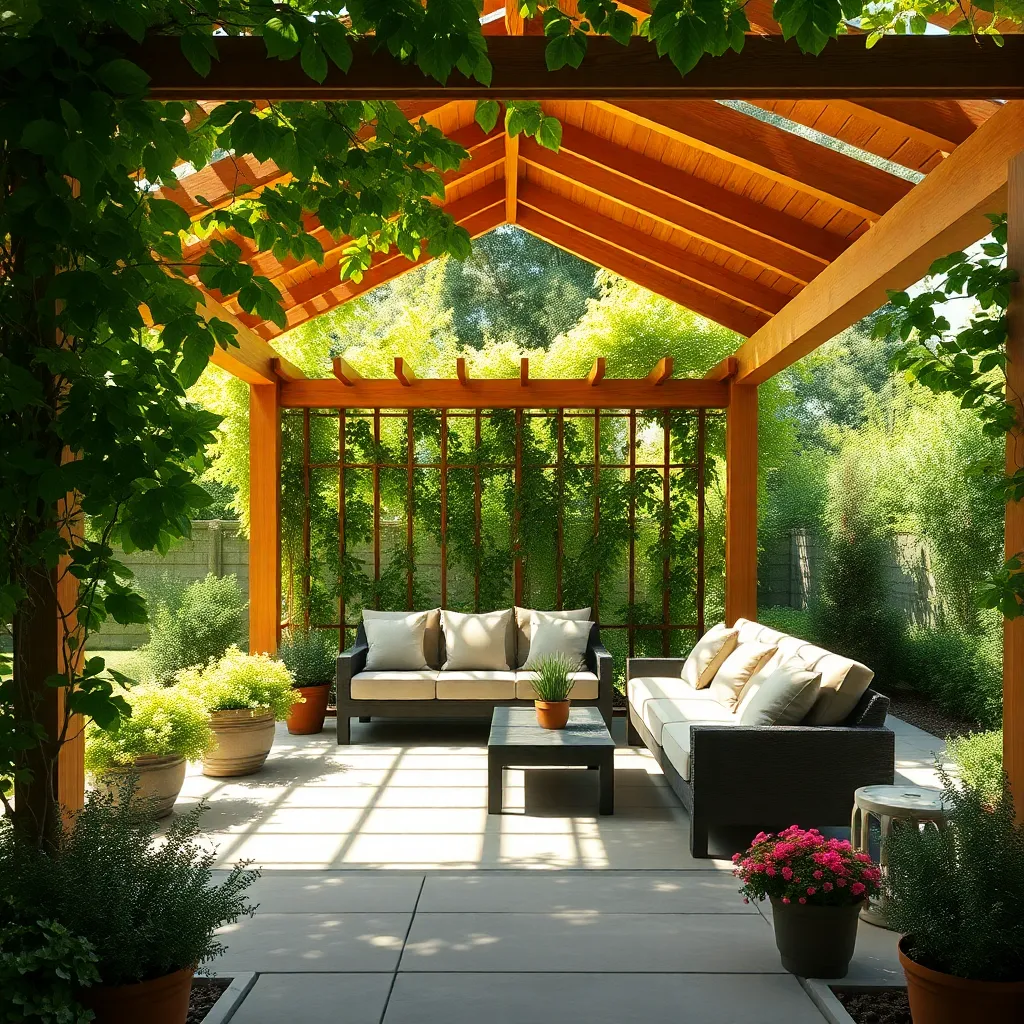
Creating privacy around your pavilion can transform it into a serene retreat, making it feel like a secluded haven. To achieve this, consider installing green screens—living walls that not only provide privacy but also enhance the aesthetic appeal of your outdoor space. Start with fast-growing plants like bamboo or evergreen hedges; these can quickly form dense barriers. For a more structured look, use trellises combined with climbing plants such as jasmine or clematis, which are both attractive and effective for coverage.
For those looking to add a touch of sophistication, consider using wooden lattice panels as a base for your green screen. Wooden panels can be stained or painted to match your pavilion, adding a cohesive feel to your garden design. As an advanced tip, incorporate built-in irrigation systems to ensure your plants thrive year-round without demanding too much maintenance. By carefully selecting the right plants and materials, you can craft a private oasis that suits both your functional needs and design preferences.
Optimal Pavilion Placement for Sunlight
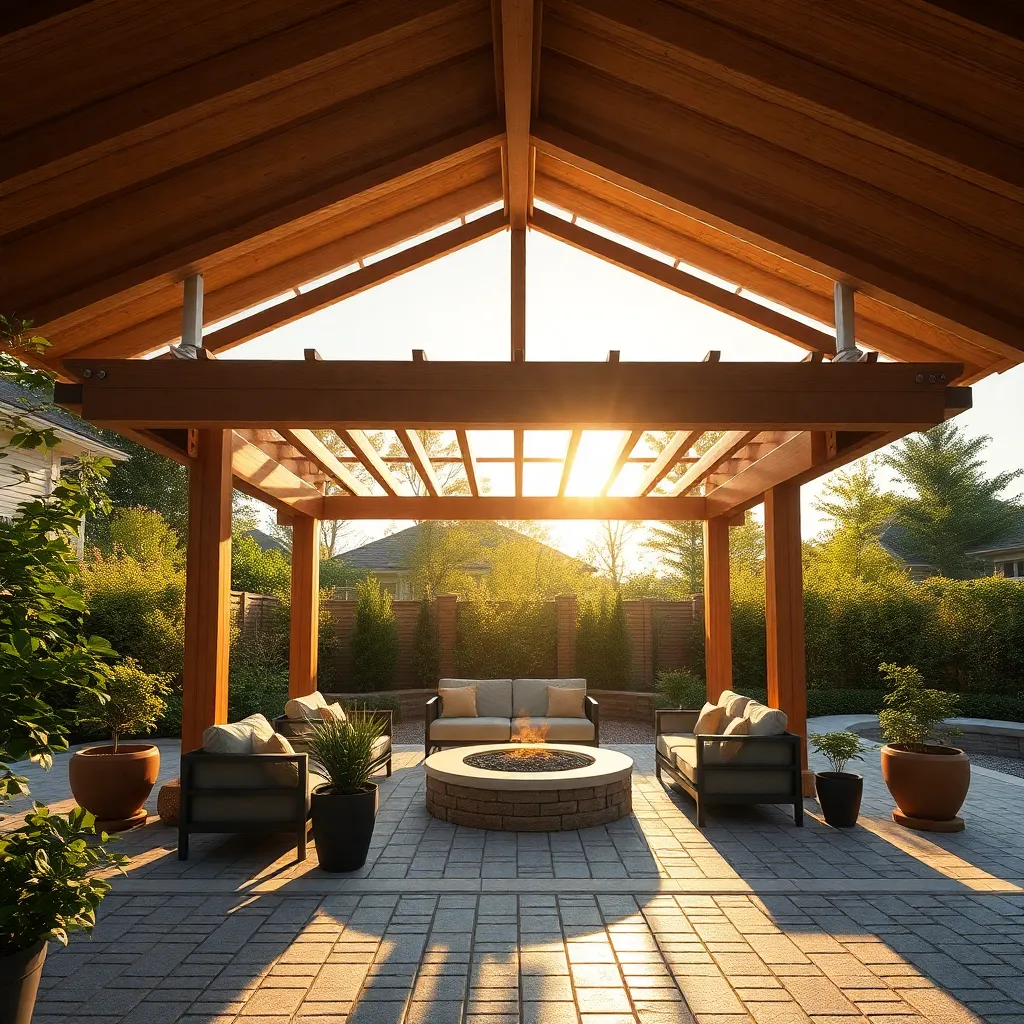
To ensure your pavilion enjoys optimal sunlight, consider positioning it in an area that receives at least 6 to 8 hours of sunlight per day. Select a location that faces east or southeast to capture the gentle morning sun while providing some afternoon shade. This setup not only illuminates the space naturally but also helps in maintaining a comfortable temperature. For those in regions with intense afternoon heat, incorporating adjustable sun shades or blinds can offer additional comfort without compromising on sunlight.
When designing your pavilion, the choice of materials is crucial for maximizing sunlight while ensuring durability. Consider using materials like tempered glass or polycarbonate roofing to allow light penetration while offering UV protection. These materials are ideal for creating a bright, inviting atmosphere. Additionally, incorporating light-colored, reflective surfaces in your pavilion’s construction can enhance natural light. For more advanced setups, integrating solar-powered lights can extend usability into the evening, making your pavilion a versatile retreat.
Incorporating Water Features Nearby
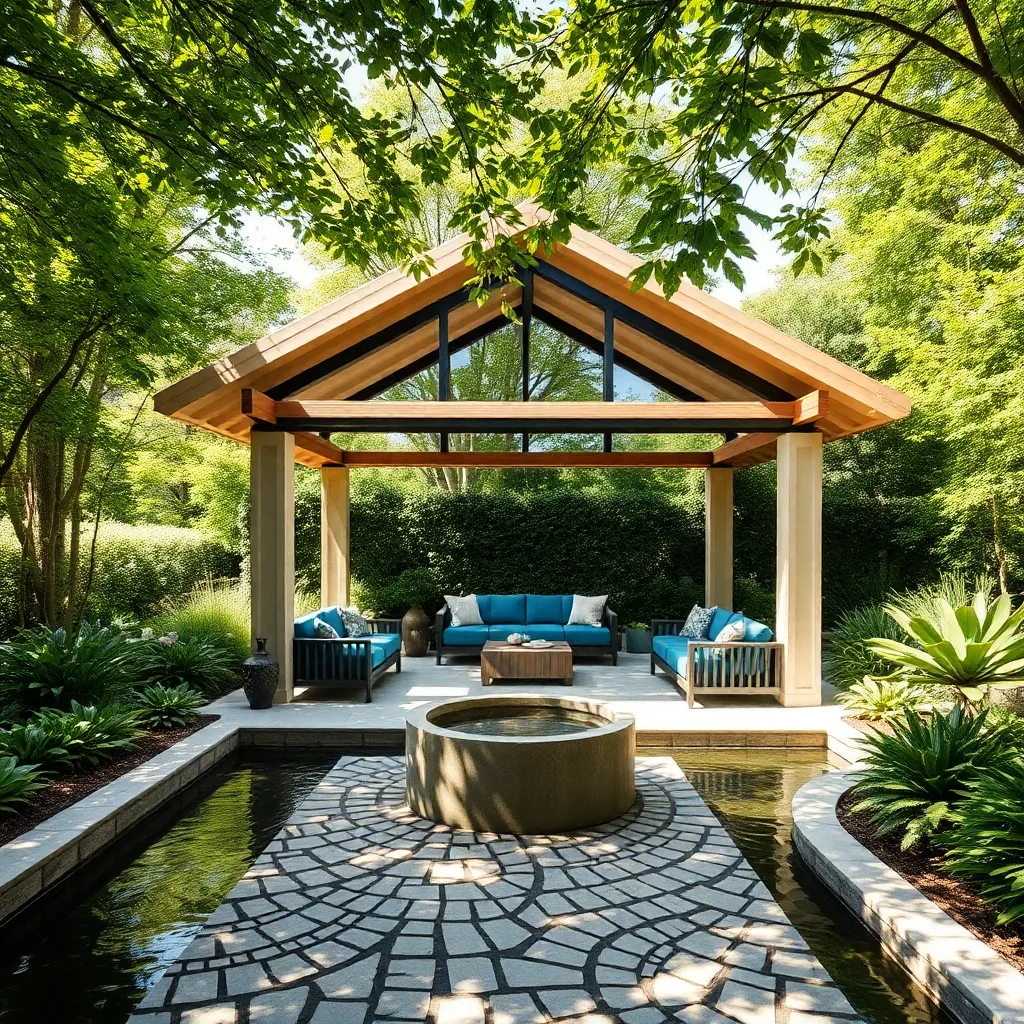
When designing an outdoor pavilion, consider incorporating a water feature nearby to enhance the aesthetic and create a calming ambiance. A simple way to start is with a small, pre-formed pond or a cascading waterfall that can be positioned adjacent to the pavilion, using materials like natural stone or concrete for durability. Ensure the water feature complements the pavilion’s design style; for example, a modern pavilion pairs well with a sleek, minimalist fountain, while a rustic shelter might benefit from a more natural-looking stream or pond.
For those ready to take on more advanced projects, integrating a small fish pond or a koi pond adds a dynamic element to your landscape. Position the pond strategically to capture sunlight during the day, which helps maintain the water temperature and supports aquatic life.
- Ensure the pond has proper filtration
- Use a mix of native plants around the perimeter for a natural look
- Consider adding underwater lighting for evening enjoyment
By choosing high-quality, weather-resistant materials for both the pavilion and water feature, you’ll create a cohesive, inviting outdoor space that can be enjoyed year-round.
Selecting Low-Maintenance Plantings
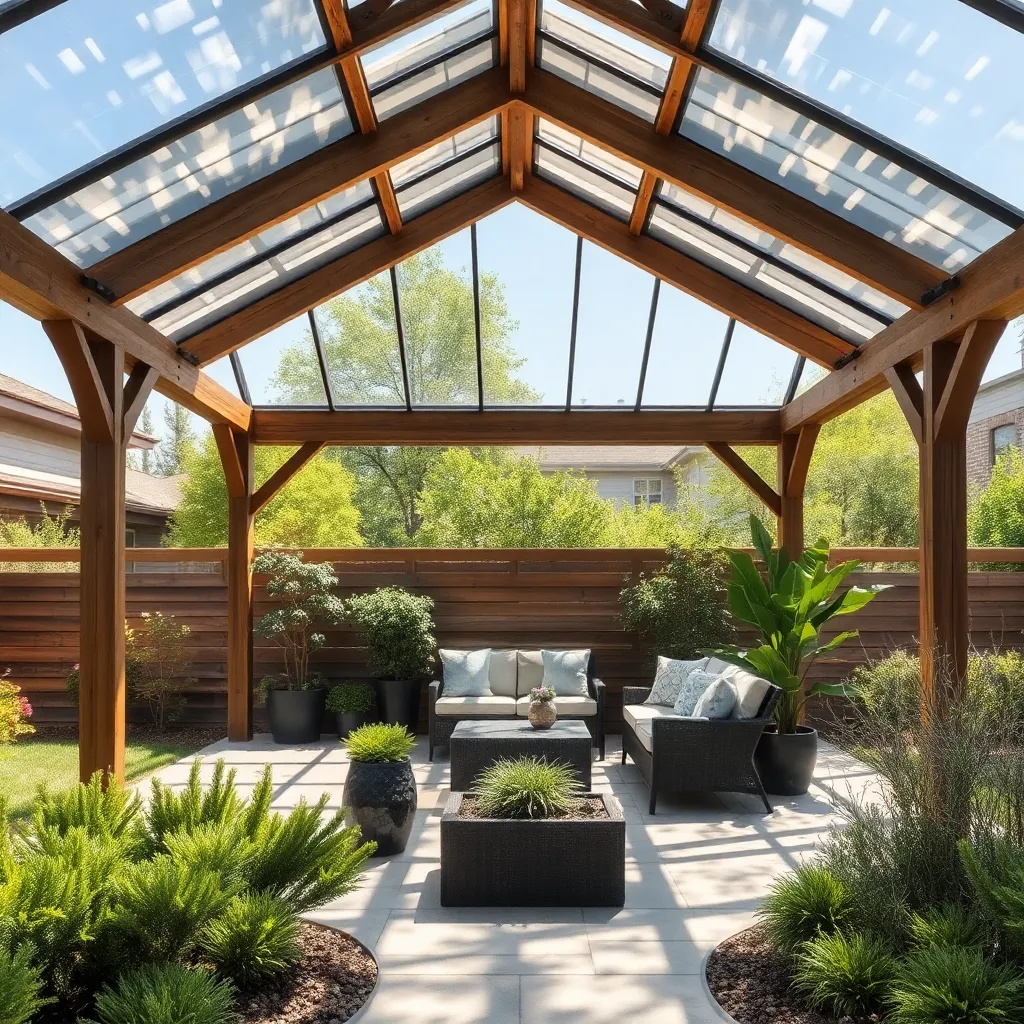
When selecting low-maintenance plantings for your pavilion area, focus on choosing native plants and drought-tolerant species. These plants require minimal watering and are more resistant to local pests and diseases. Consider incorporating plants like lavender, sedum, or ornamental grasses, which provide texture and color without demanding constant care. For a more structured look, add evergreen shrubs such as boxwood or juniper, which remain attractive year-round with minimal pruning.
To enhance the design and functionality of your pavilion landscaping, group plants based on their water and sunlight needs. This not only simplifies maintenance but also ensures healthier growth. Use mulch generously to retain soil moisture, suppress weeds, and add a polished look to your garden beds. For a touch of sophistication, consider installing a simple drip irrigation system, which efficiently waters plants while you enjoy relaxing under your pavilion. With these strategies, your outdoor space will remain lush and inviting with little effort.
Creating Cozy Seating Arrangements
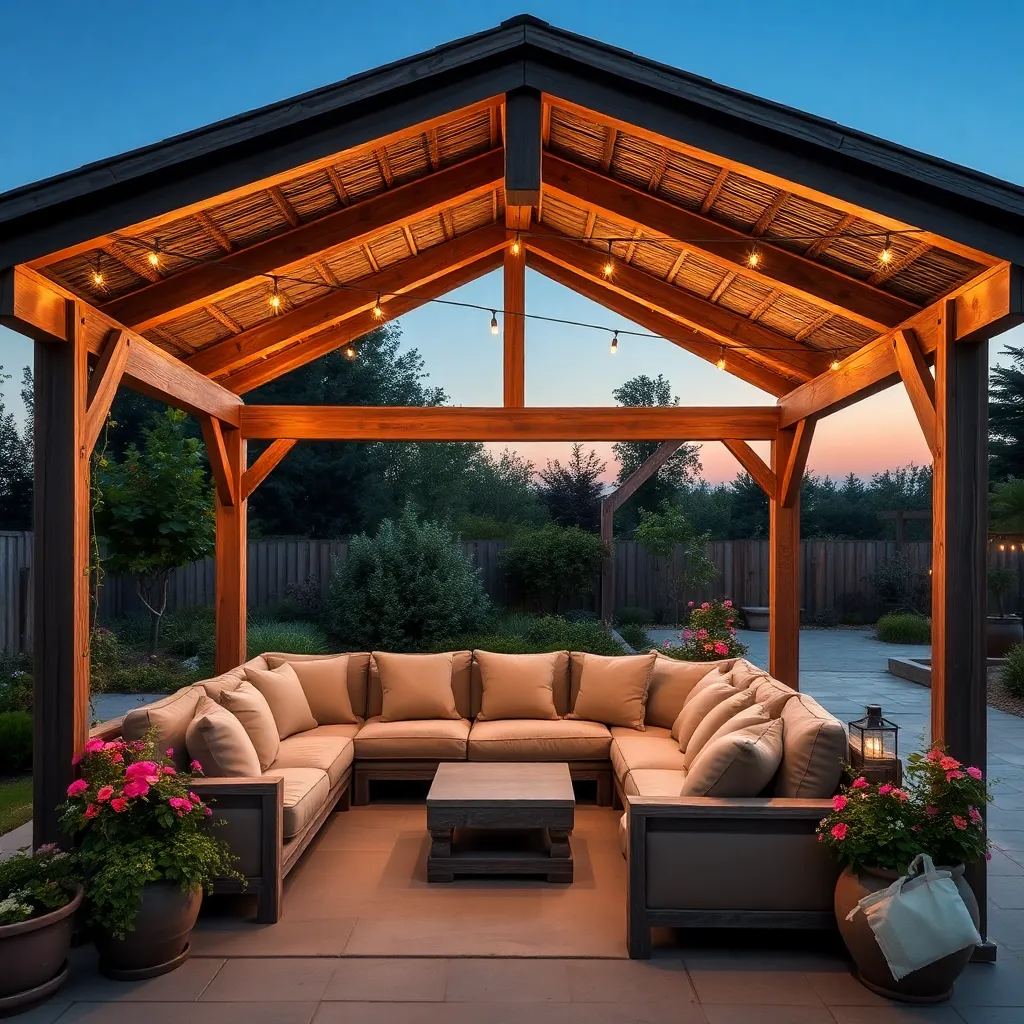
Creating a cozy seating arrangement under your pavilion can transform your outdoor space into a welcoming retreat. Start by choosing weather-resistant materials like teak or powder-coated metal for durability. Incorporate an outdoor rug to define the area, and consider adding plush, water-resistant cushions for comfort. For a beginner-friendly setup, arrange your seating in a circular pattern to encourage conversation and intimacy. This setup not only looks inviting but also maximizes the use of space.
For those looking to elevate their outdoor design, consider layering textures and incorporating a mix of furniture pieces. Combine benches, lounge chairs, and a small table to create a dynamic and functional layout. Advanced gardeners might also add built-in seating with integrated planters to seamlessly blend nature with relaxation. Remember, the key is to ensure the seating is both aesthetically pleasing and practical, making your pavilion a go-to spot regardless of the season.
Lighting Strategies for Evening Use

To enhance your pavilion for evening use, strategically placed lighting can transform it into a magical retreat. Consider using a combination of string lights, lanterns, and solar-powered LED options to create a warm and inviting atmosphere. String lights can be draped along the pavilion’s beams or wrapped around nearby trees for a whimsical effect, while lanterns on tables provide intimate lighting for gatherings. For a sustainable option, choose solar-powered LEDs that automatically illuminate at dusk, requiring minimal maintenance.
For those looking to enhance functionality, consider installing dimmable lights and motion sensors for convenience and energy efficiency. Dimmable lights allow you to adjust the brightness based on the occasion, ensuring the perfect ambiance whether you’re hosting a lively party or a quiet evening. Motion sensors can be integrated into pathways leading to the pavilion, ensuring safety without the need for constant illumination. When choosing fixtures, opt for weather-resistant materials like stainless steel or powder-coated aluminum to withstand outdoor conditions.
Blending Pavilions with Surrounding Landscape
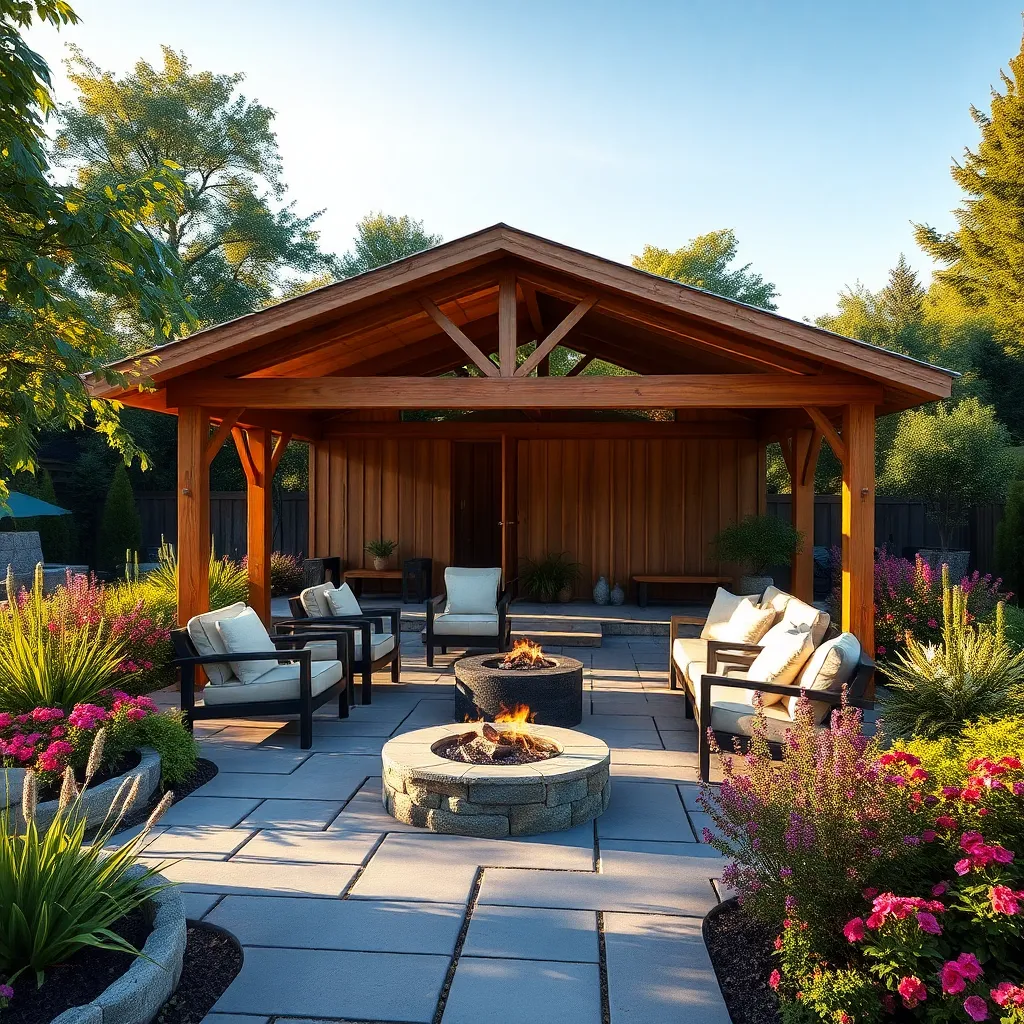
Integrating a pavilion into your landscape requires thoughtful design to achieve harmony with your surroundings. Start by selecting materials that reflect the natural elements of your garden, such as using wood or stone that matches existing features like pathways or garden walls. For a seamless blend, consider the pavilion’s shape and size—a hexagonal or round structure often complements a variety of garden layouts and creates a balanced visual flow.
For those looking to enhance the pavilion’s connection to nature, incorporate living walls or climbing plants around the structure. This not only softens the edges but also adds texture and color, making the pavilion feel like a natural extension of the garden. Advanced gardeners might experiment with using native plants to create a more eco-friendly environment, while beginners can focus on simpler options like installing pre-made trellises for instant greenery. By tailoring these elements to your landscape, you ensure the pavilion is both a functional and aesthetic asset.
Adding Decorative Elements and Accents
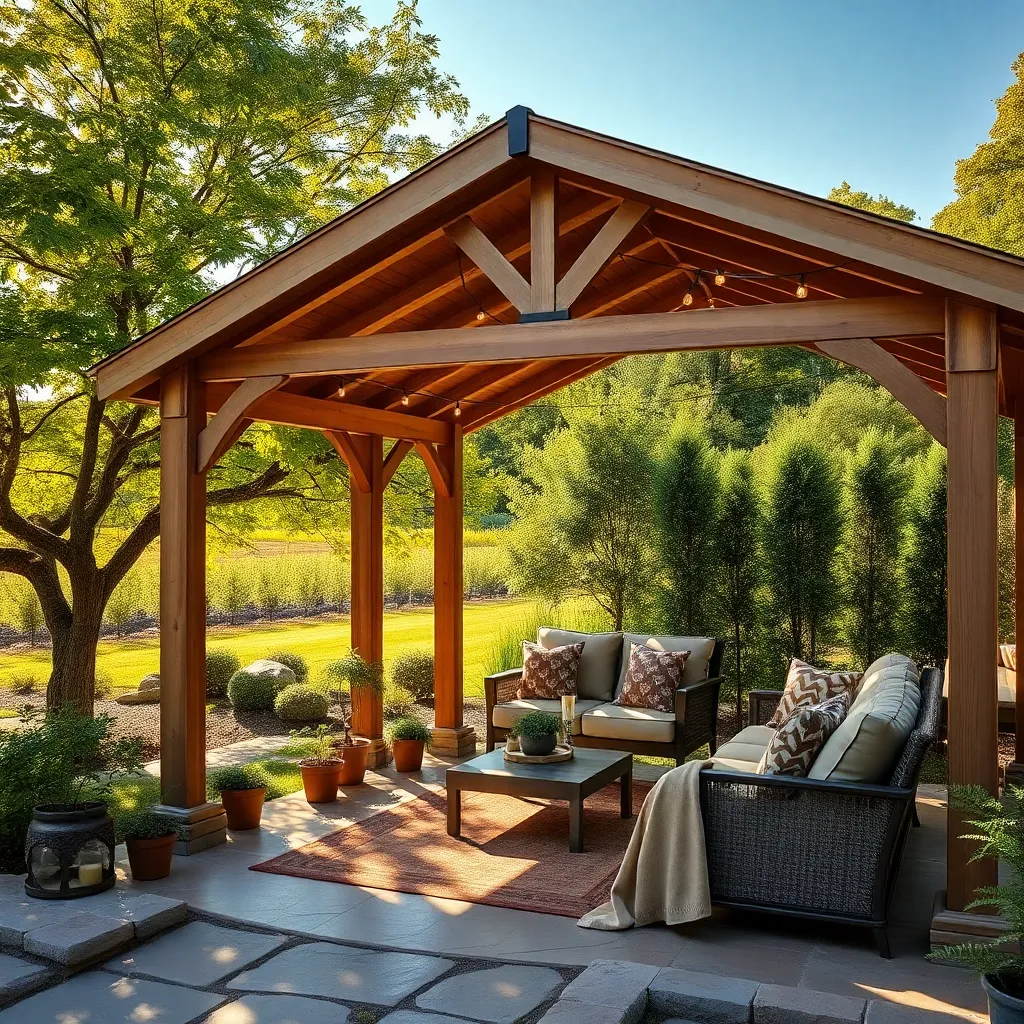
Incorporating decorative elements into your pavilion can transform it from a functional structure into a captivating focal point in your garden. Start by considering the use of string lights or hanging lanterns to create a warm, inviting atmosphere during the evening hours. For those new to outdoor decorating, begin with weather-resistant materials such as treated wood or metal to ensure longevity and minimal maintenance.
Advanced gardeners can add unique accents like climbing plants or decorative screens to enhance privacy and add a touch of nature to the pavilion. Consider using vining plants like clematis or climbing roses, which can be trained to grow around posts or across the roof. For a more striking design, install custom lattice panels or intricate metalwork, which can double as both art and shade providers. Remember, the key is to balance aesthetics with functionality to create a space that is both beautiful and usable throughout the year.
Sustainable Landscaping Practices for Pavilions
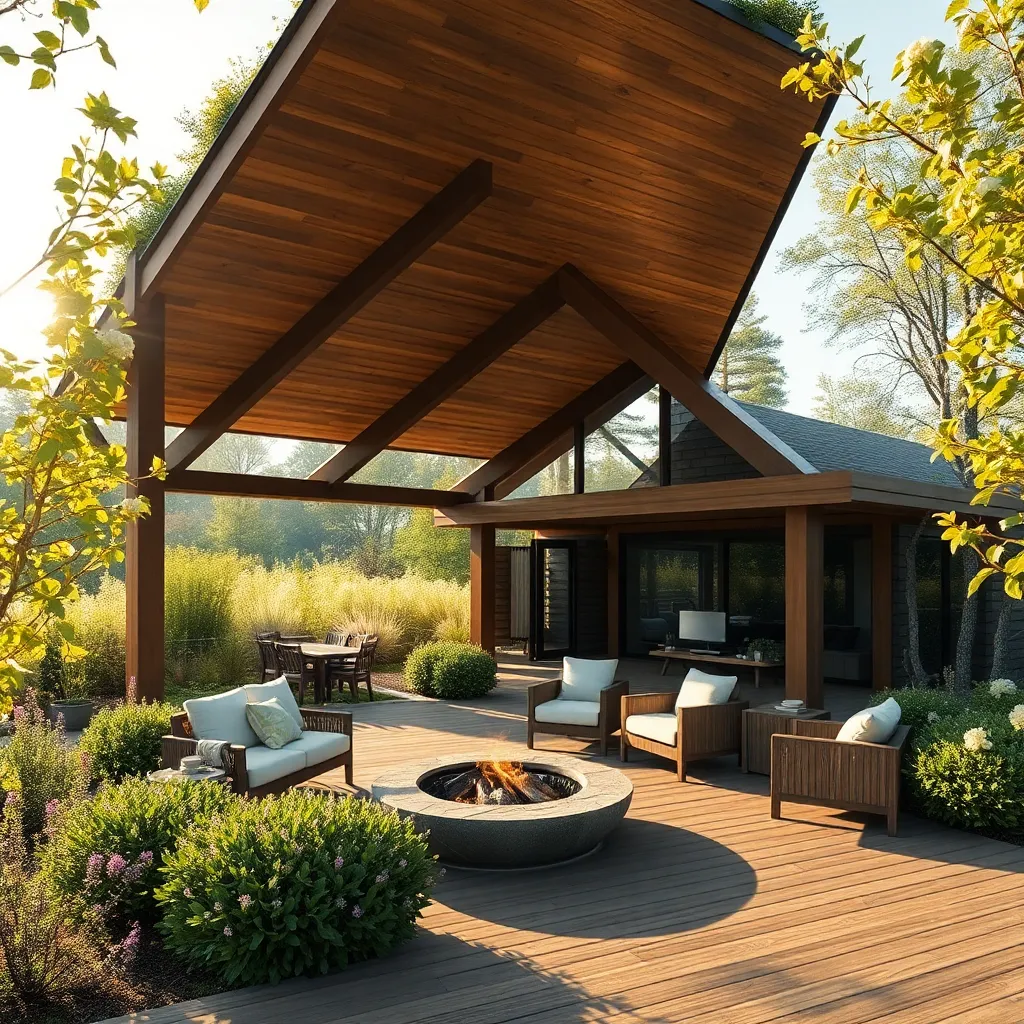
Integrating sustainable landscaping practices with your pavilion not only enhances its aesthetic appeal but also benefits the environment. Consider using native plants around your pavilion; they require less water and maintenance, making them a perfect choice for eco-friendly landscaping. To minimize soil erosion, use permeable materials like gravel or permeable pavers for pathways and surrounding areas, allowing rainwater to naturally seep back into the ground.
For a more advanced touch, incorporate rainwater harvesting systems to capture runoff from your pavilion’s roof. This water can be used to nourish nearby plants or grass, reducing the need for additional irrigation. Additionally, opt for recycled or sustainably sourced materials when constructing your pavilion to lessen your environmental footprint. These smart choices create a beautiful, sustainable landscape that complements your outdoor space while promoting ecological health.
Conclusion: Creating Beautiful Outdoor Spaces
In exploring the ’11 Pavilion Landscaping Combos,’ we’ve delved into key relationship concepts such as balance, nurturing communication, creating shared spaces, and prioritizing quality time. We also touched on fostering trust, embracing growth, and the importance of individuality within a partnership. Each concept serves as a vital piece in cultivating a harmonious relationship landscape, much like blending the right plants and features in a garden.
To begin enhancing your relationship today, start by choosing one concept that resonates with you and your partner, and dedicate time to discuss how it can be integrated into your daily lives. This proactive step can unlock new dimensions of understanding and connection in your relationship.
We encourage you to bookmark this article as a go-to resource for nurturing your relationship garden. With each revisit, you’ll find fresh inspiration and practical guidance to adapt to your evolving partnership needs.
Remember, relationship success isn’t a destination but an ongoing journey. By nurturing these foundational concepts, you pave the way for a thriving and fulfilling partnership, ready to weather any season together. Let this article be your compass, guiding you toward a flourishing relationship landscape.


